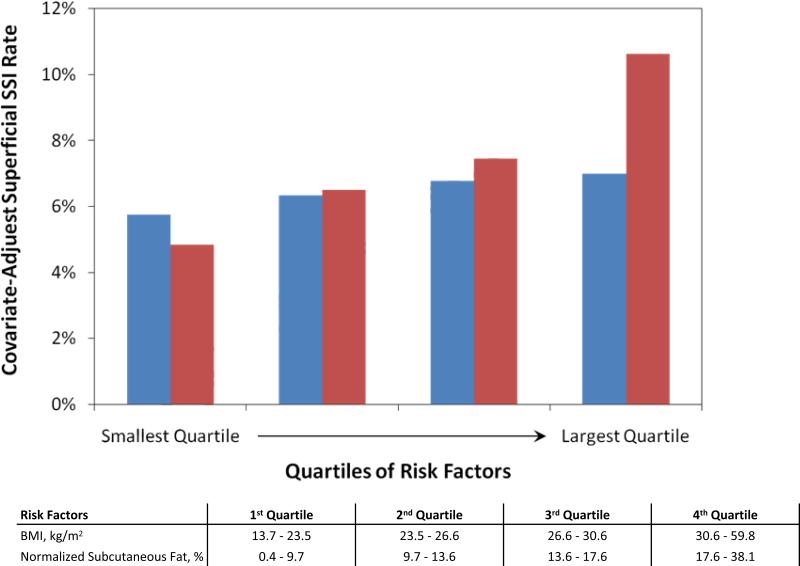Figure 4.
Covariate-adjusted incidence of superficial incisional surgical site infection (SSI) with patients stratified into quartiles of normalized subcutaneous fat and BMI. SSI rate was adjusted for gender, steroid use, smoking, operative time, and BMI or normalized subcutaneous fat using the Models 3 and 4 in Table 4. The covariate-adjusted rate of superficial incisional SSI increased with normalized subcutaneous fat. Furthermore, patients in the largest quartile of normalized subcutaneous fat had more than twice the risk of superficial incisional SSI compared to those in the smallest quartile (10.6% versus 4.8%, p < 0.05). In contrast, although a similar trend is observed for BMI, patients in the largest quartile of BMI had only a slightly increased risk of superficial incisional SSI compared to patients in the smallest quartile (7.0% versus 5.7%, p > 0.05). Blue bar, body mass index; red bar, normalized subcutaneous fat.

